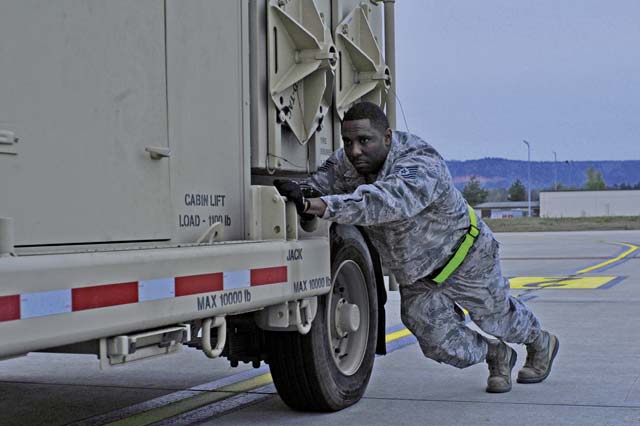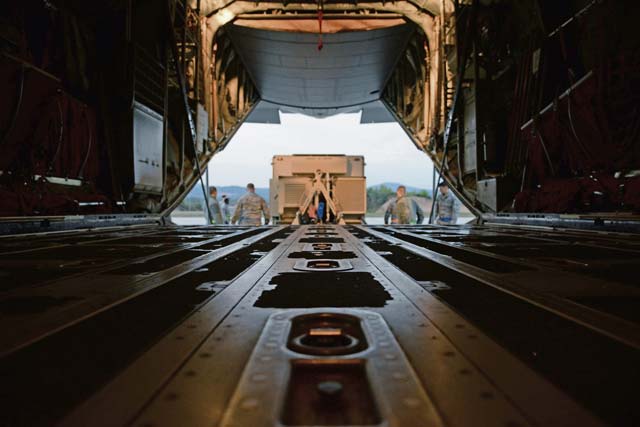
Airmen from the 1st Combat Communications Squadron along with 37th Airlift Squadron Airmen pack like pros to load a deployable navigational aid onto a C-130 April 15 on Ramstein.
“It’s not an everyday piece of equipment,” said Staff Sgt. Cory Martin, 1 CCS airfield systems supervisor. “The equipment barely fits into the C-130 so we have to work hand in hand a lot with the 37 AS to train regularly just because they don’t see that a lot.
The equipment was on its way to support the 122nd Expeditionary Fighter Squadron for joint training in Romania.
“Our equipment is a navigational aid so that pilots can go out on their mission and find their way back to the base.” Martin said.
The Tactical Air Navi-gation System works simply by receiving a signal from incoming aircraft and then sending another signal back to the aircraft. From that point, computers calculate the bearing and distance of the aircraft which allow the air traffic controller to assist the aircraft in landing.
The operation aims to foster positive international relations through cooperation with our allies.
“This mission is a part of the theatre security package. It’s going to support our NATO allies,” said Tech. Sgt. Franklin Wilson, 1 CCS non-commissioned officer in charge of deployable air traffic control and landing systems. “This is where we exercise with them and show off our capabilities and teamwork with our NATO personnel.”
In deployed locations, Wilson said there are only three pieces of equipment needed to set up an air strip.
“The radar, air traffic control tower, and the TACAN work in unison,” said Wilson. “The radar goes around in a 360 degree and gets a picture of what’s out there. Aircraft, weather, landscape; it’ll give you the whole picture. That’s how the air traffic controller who’ll be either sitting in the tower or the radar portion can see out to about 200 nautical miles.
“From there the tower would take over and the air traffic controller would talk to the pilot themselves and guide them down to the runway,” Wilson said. “The TACAN is what the plane sees, it sends signals to the plane and the plane can use that guidance to make it to the runway.”
Postured to respond with world-class airlift and expeditionary combat support, the 1 CCS continues to assist Ramstein in strengthening partnerships between our NATO allies.
“We can go set the TACAN up and it would be like opening an airfield. The air traffic controllers would have all of the capabilities of a fixed air base,” Wilson said. “As long as they have it laid out and have a runway, we could set up and they could operate just
as normal.”



